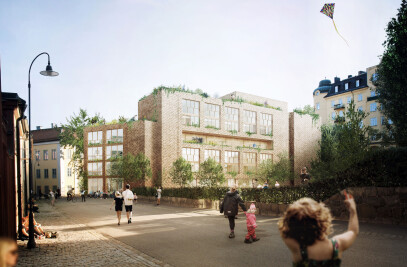The landscape that slowly evolved where the clay was extracted is a dramatic area, a space where the natural elements are close to the body; here earth, heaven and sea meet each other. The clay pit, Lergraven, is akin to a rift, a gap in the islands inner. Here the layers of history are unveiled, like the stratification of the clay – an archive of the memory.

The crevasse forms an inner space on the island, here the clay and the trees encircle the body. A promenade from the higher levels of the island through the inner space of the crevasse, towards the sea and the light. Here, the gaze can wander across the sea. A glimpse of Hilma af Klints history, her life on the other side of the sound. Perhaps she was looking out over the water and imagined the position for the Temple. The temple, with its spiral shaped movement, up towards the light, firmly enclosed by the elements.

Perphaps Hilma af Klint’s aspiration for a home dedicated to her art can be fulfilled here. The Lergraven is a space sheltered from the view and transparency of the open landscape, here the Temple can interact with the landscape without interrupting the surrounding nature. The island is a protected place, a new imprint here requires care and a profound understanding of its history, but also for the contemporary and future times.

For the Temple to acquire its clear body, and an inner space where the art can get its own legitimate space we propose an independent volume sheltered from the components of the ordinary museum. The Temple is the movement of the art, inwards and upwards towards the light; a sheltered space for the art of Hilma af Klint.Like the clay tells the narrative about human life, can also an archive for the thoughts of Hilma af Klint find its place here. Here the contemporary history interact with the history of Hilma af Klint, the meaningful collection of notes around an exceptional life be made accessible for coming generations.
Team: Emil Bäckström, Petra Gipp, Jonas Hesse







































